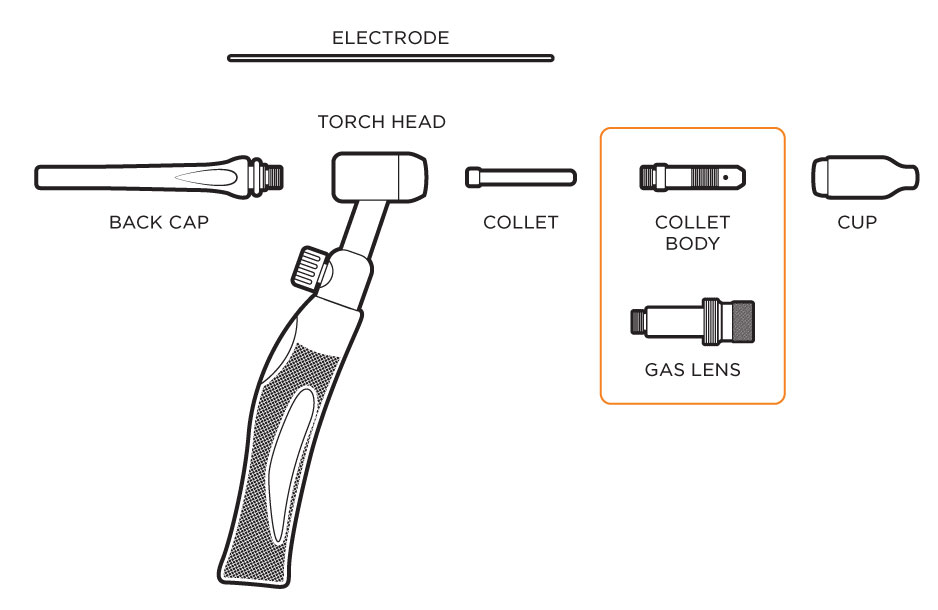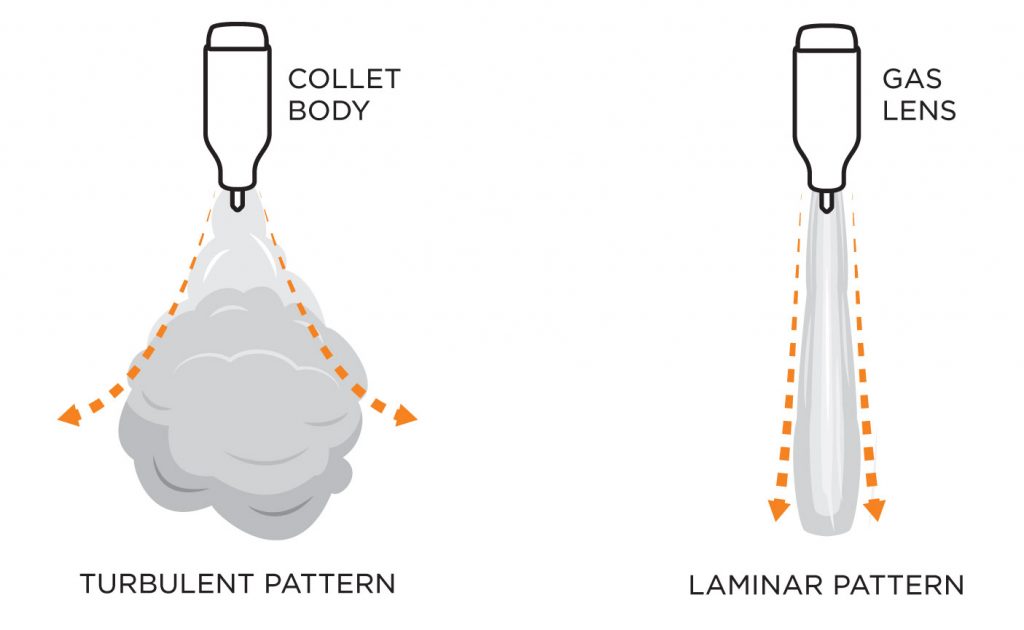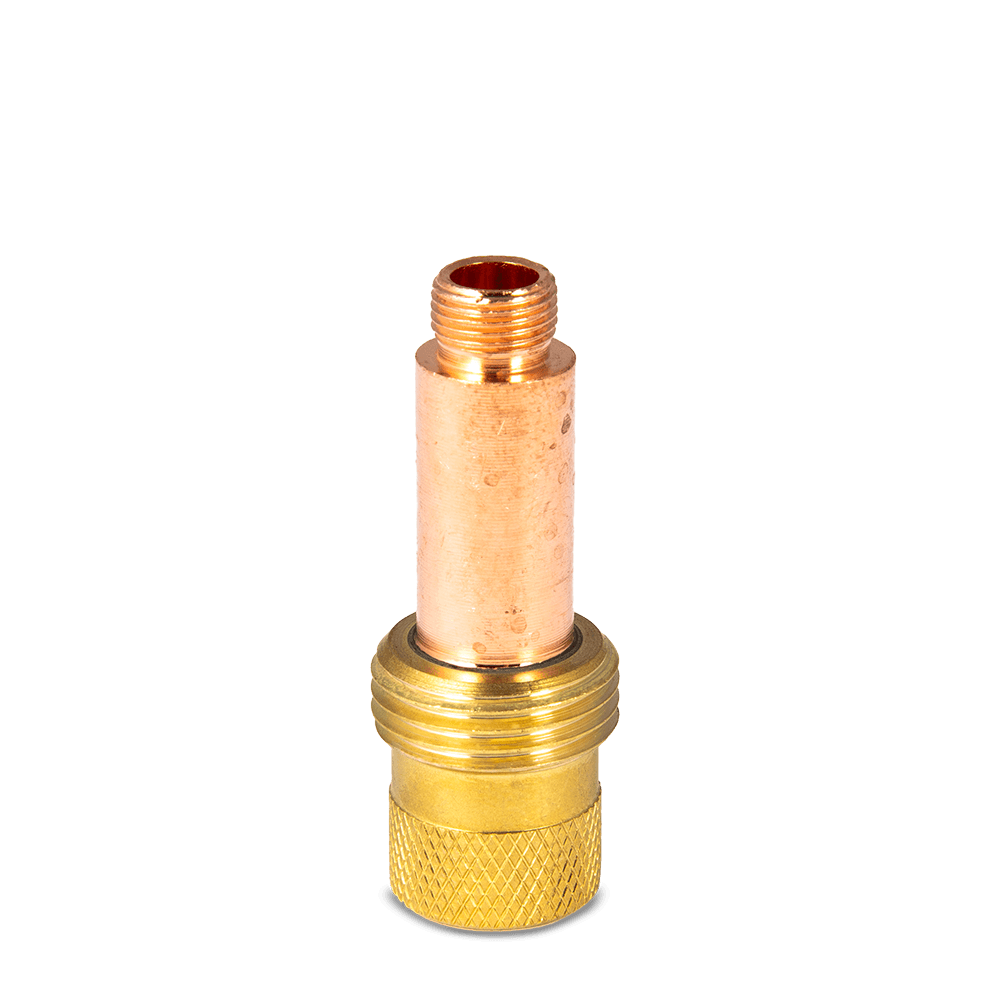Collet Body vs Gas Lens
February 7, 2022
TIG torches come with a number of interchangeable consumables, and the collet body is one of those. Even though they seem like insignificant pieces, the consumables in your torch can make a difference to the quality of your weld.
Each consumable can be changed: the back cap comes in different lengths, you can get clear cups to see the weld better, and you can swap your collet body out for a gas lens. But, what’s the difference between a collet body and a gas lens, and why would you swap?

Collet Body
A collet body is one of the standard consumables that make up the assembly of a TIG torch. They do two things at once: hold the electrode in place and allow the shielding gas to blow over the weld.
But just because they’re what comes standard in a TIG torch, does that mean they’re the best?
A collet body releases a broad plume of gas over the weld pool to keep it shielded. The gas being pushed out of the torch is filtered through several small, specially designed holes at the end of the collet body.
The force of the flow is what pushes the gas out, so there’s no real direction except out, which can lead to turbulence.
Turbulence in the shielding gas can lead to spotty cover, so even with the perfect torch and work angle, you might find defects – like porosity – in your finished weld. Despite everything being right, it can still happen because pockets of air get trapped in the gas as it is expelled from the torch.
Gas Lens
A gas lens replaces the collet body in the assembly of a TIG torch (but not the collet itself!), so it does the same things for the most part. It holds the collet in place and distributes shielding gas over the weld.
However, unlike a collet body, rather than a few holes, a gas lens comes with a diffuser and a mesh screen (it looks like a mesh doughnut around the centre, where the electrode sits). The diffuser and mesh screen means that the gas is dispersed evenly across the weld pool in a laminar pattern, with way less turbulence.

Advantages of a Gas Lens
- More gas coverage
- Less turbulence in the gas
- Allows the tungsten to stick out further for better visibility and getting into tight spaces
- A cleaner gas and a cleaner weld
Although the collet body is the consumable that comes with the torch, it’s not the best option, though it’s still not a bad one.
As with all welding consumables, collets and gas lenses come in multiple sizes to match the size of the electrode you’ll be using. So make sure, regardless of which you choose, that it fits the size of your tungsten electrode. For example, a 2.4mm electrode will need corresponding 2.4mm consumables, including the collet body or gas lens.

